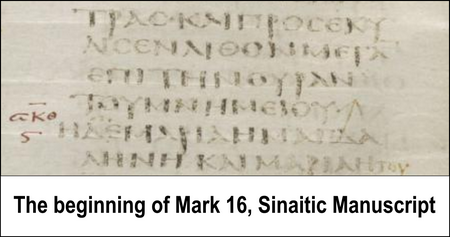The New Testament that we have in our possession today is the product of a multitude of manuscripts. The word manuscript in general has reference to any handwritten document. However, when referring to the Bible, it references handwritten copies that are in the original Koine Greek language.
The fact that we no longer have the original manuscripts penned by the New Testament writers would seem to be a concern. However, the multitude of copies that we have in our possession serve to assuage any concerns about whether we have the actual words of Paul, Peter, John and the others who wrote by inspiration of God.
Consider first of all the attitude the first century Christians held toward the apostle’s words. For example, the letters Paul wrote to the various churches. These served as instruction in doctrine and morals, and were considered precious. It is not surprising that many, many copies of these original letters were made to “be read to all the holy brethren” (cf. 1 Thessalonians 5:27).
Researchers are able to date with a great degree of certainty most of the copies we use to reconstruct the original text of the New Testament. This is done in a number of ways. Some are very technical, and some are straightforward. First, many manuscripts are actually dated, though others are not. The relative dates often can be determined through an examination of the handwriting itself.
The earliest New Testament manuscripts are called uncials, while later manuscripts are called cursives. Uncials are written in large letters (think capitals). Cursive manuscripts (also known as “miniscules”) were written in small letters. If you think of Greek letters you typically see today, these are cursive letters. While both types of writing existed in New Testament times, apparently when books were scribed, the book hand was uncial.
So, the uncial manuscripts are the most important, because they are typically the oldest. There are around 650 of them used to reconstruct the New Testament. The uncials include 95 documents written on papyrus, and 270 lectionaries. A lectionary is a manuscript that has been written to be read in public worship. The remainder of these manuscripts are written on parchment. Most of these date back to the 3rd and 4th centuries. Important uncial manuscripts include the Vatican Manuscript, the Sinaitic Manuscript, and the Alexandrian Manuscript. In fact, these can be known as the “big three.”
The Vatican Manuscript is from the 4th century and is typically viewed as the most important witness for the reconstruction of the New Testament text. It has resided in the Vatican library in Rome since 1481, perhaps even earlier. It contains in the Greek language almost all of the Old and New Testaments. The first 45 chapters of Genesis, about 32 of the Psalms have been lost. The end of this Bible has likewise been lost — Parts of Hebrews, Paul’s letters to Timothy and Titus and Revelation. Interestingly, the scribe did not include Mark 16:9-20 (a text that is disputed to this day), but did leave a column blank at this point. It may be that the dispute over this section of scripture dates back to that time, and the scribe was undecided about including it.
The Sinaitic Manuscript is almost an important codex as the Vatican. It is so named because it was found at St. Catherine’s Monastery (est. 550 AD) on Mount Sinai. The Greek scholar Constantin von Tischendorf arrived at the Monastery library in 1844. He came across a heap of old papers that the librarian there had put in a stack to be burned. He was given 43 of the sheets, but his enthusiasm was suspicious to the authorities at the monastery and the would not grant him any more. Nine years later he returned, and no on there remembered the papers. Finally, on a third trip he found the remainder of the manuscript in the home of a steward of the convent, off the actual site of the Monastery. The manuscript was sold by the Russian government to the British Museum where it now resides. There are a total of 393 leaves from an approximate original 730 leaves. 245 are of the Old Testament, 148 of the New Testament. It is dated to the middle of the fourth century, and is the oldest complete manuscript of the New Testament that is known today.
The Alexandrian Manuscript is known as such because it spent several centuries in Alexandria before being moved to Constantinople in the early 1600’s, and then to London in 1627. It is presently in the British Museum. It has 773 leaves, with 143 of them from the New Testament. A number of leaves are missing from the New Testament writings, with Matthew 1:1-25:6; John 6:50-8:52; and 2 Corinthians 4:13-12:6 having been lost. The writing style dates this uncial to some time in the fifth century. This uncial was the first one known to translators of the New Testament. When the King James translation was made in 1611, it was the most important witness to those who prepared this great English translation.
The New Testament is by far the most copied and well established of any ancient text. More must be said about the science of textual criticism, but because of the large number of both uncial and cursive manuscripts, we can rest assured that we have in its complete and unaltered form the entirety of God’s revelation to man. The Lord’s covenant is available to us even 20 centuries after it was ratified!





